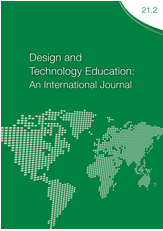The Teachers' Views on the Significance of the Design and Craft Teaching in Finland
Keywords:
design, craft teaching, craft as a subject, holistic craft, craft teacherAbstract
The Finnish curriculum for crafts emphasises the creative problem-solving skills of the student, the completion of different design tasks and the implementation of designs, while seeking to nurture the student’s self-esteem. Furthermore, students should draw up the designs for their artefacts, plan their work, and also develop designs when needed. These aims can be accomplished by
teachers diligently teaching the designing of craft products. The purpose of the present study is to analyse teachers’ views on design as a part of the holistic craft process in the school context. The study was conducted in two phases. In the first phase five teachers were interviewed, and in the second phase four teachers wrote short essays.
The research questions addressed were as follows: “What kind of views do teachers hold on students’ designing in the crafts area? How is designing implemented in craft teaching?” The results indicate that the extent of students’ participation in designing their craft product is dependent on the attitudes and competence of their craft teacher. Design-oriented teachers plan the designing situations and stimuli carefully and value design as a significant part of the craft process. Technique-oriented teachers will
consider their students’ participation in design unnecessary or too challenging and as detracting from more essential learning outcomes, such as craft techniques. It seems the teachers need supplementary education to implement the new curriculum of crafts in Finland.
Downloads
Published
How to Cite
Issue
Section
License

This work is licensed under a Creative Commons Attribution 4.0 International License.
This work is licensed under a Creative Commons Attribution 4.0 International License.
Authors who publish with this journal agree to the following terms:
Authors retain copyright and grant the journal right of first publication with the work simultaneously licensed under a Creative Commons Attribution License that allows others to share the work with an acknowledgement of the work's authorship and initial publication in this journal.
Authors are able to enter into separate, additional contractual arrangements for the non-exclusive distribution of the journal's published version of the work (e.g., post it to an institutional repository or publish it in a book), with an acknowledgement of its initial publication in this journal.


